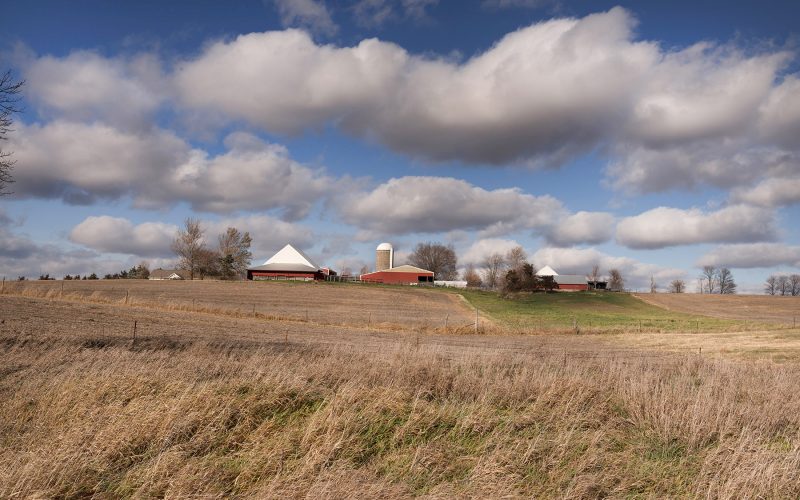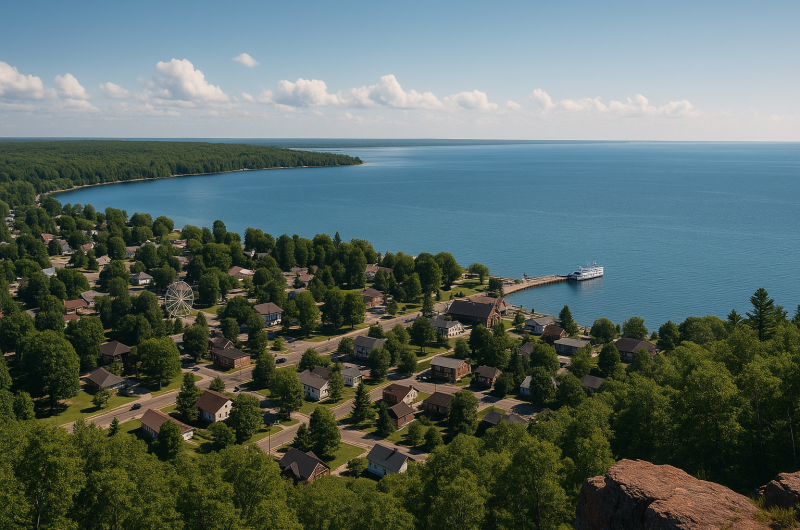The UP’s Farming Revival Reconsidered

In 2021, Rural Insights published an article showing an increase in the number of UP farms. This growth was particularly notable as it represented a reversal of a long-term decline dating back to the 1930s.
This article provides an update of the region’s farm economy using the latest Agricultural Census data from 2022, beginning with an overview of the environmental and economic factors affecting farming in the region.
Farming’s Transition
Farming in the United States has undergone a process of consolidation since the early twentieth century, with fewer farms producing more food. This change is driven by technology.
Farmers have invested in machinery, fertilizers, and other agrichemicals while taking advantage of genetic improvements in seeds and livestock to produce more food. Modern farming is now a highly specialized capital-intensive enterprise, with just 3 percent of farms accounting for over 51 percent of total US food production.
So-called ‘industrialized agriculture’ has helped keep food prices relatively low for consumers. Farmers have absorbed these lower prices while coping with higher input costs (e.g. fertilizer, fuel and machinery) with the result that farming has become marginally profitable for all but the largest producers.
Small producers (defined by the Census as those with sales of less than $300,000) typically rely on off-farm sources for the majority of their household income.
UP farmers have additional challenges arising from a short growing season, poor soils, extreme weather and a small local market, which means they have to absorb any transportation costs associated with shipping commodities to more distant markets. These forces, combined with farming’s structural changes, led to decline in UP farm numbers from over 13,000 in 1930 to 1,688 in 1992.
Since the early 1990s, farm numbers have increased by 20 percent, with much of the growth due to an expansion of farms of less than 49 acres in size. In 1992, the UP contained 231 farms of less than 49 acres, by 2022 the equivalent figure is 699. This increase is driven, in part, by consumer concerns surrounding industrialized agriculture and its negative environmental impacts.
Purchasing locally grown organic food at Farmers Markets or participating in a Community Supported Agriculture (CSA) program whereby participants provide upfront funding to a farmer who in return provides a weekly box of fresh vegetables once harvesting begins, are seen by some as more sustainable options. Markets can be found in major population centers across the UP from Sault Ste Marie to Ironwood.
Marquette’s Downtown Farmers Market is the largest in the region; a 2016 survey estimated annual sales exceeded $1.5 million, while the average distance that food travelled to the market was 25 miles. For UP farmers, adopting hoop houses and greenhouses has allowed them to meet the demand for locally produced food and made farming more viable by extending the growing season.
Given the costs and time associated with obtaining Organic certification, less than one percent of UP’s farms are officially certified as organic. As an alternative, some producers use ‘naturally grown’ to describe their production methods, which still allows charging consumers a price premium. The remainder of this article considers the most recent changes in the region’s farm economy.
Farm Numbers
Between 1992 and 2022, the number of UP farms increased, but in the most recent five-year census period 2017-2022, their numbers dropped in line with a statewide decrease of over 2,000 farms. Chippewa and Menominee counties experienced the largest losses, while Marquette and Delta counties experienced gains (Table 1).
Farm Size
The largest percentage drop in farm numbers occurred among the area’s smallest farms (1-9 acres), while farms of 180 acres or more had the smallest drop (Table 2). The economics of farm production favor large farms, unless small producers can develop a niche market in which consumers are willing to pay a price premium for such items as grass fed beef.
Farm Income
Farm income is derived from the market value of the products sold, plus any farm related income and government subsidies. Most producers do not receive any subsidies, the biggest subsidy recipients are the largest producers.
Production expenses such as seed, fuel and fertilizer purchases are then subtracted from the income figure to produce a net income figure. The average net income in Alger, Keweenaw, Iron and Marquette in 2017 was negative (Table 3); in 2022, the average net income for Marquette and Keweenaw farmers was still negative, but had improved in Alger and Iron counties.
The relatively low net income levels found in most counties show that the majority of the region’s small farmers, like many of their counterparts outside the UP, are dependent upon off-farm income for their survival. The 2022 income data also illustrate how farm income varies across the region, from a high of over $90,000 in Luce to a loss of over $12,000 in Keweenaw.
These variations are tied to the specific crops and livestock produced in each county and their related commodity prices. Luce county’s average income, for example, is highly skewed by the presence of 5 farms in excess of 500 acres and sales of more than $100,000.
Importance of Farming
When the market value of agricultural products produced in each county is ranked for all Michigan counties (Table 4), most UP counties are in the bottom 25 percent (i.e. having a rank of 62 or higher) for each time period. This serves to emphasize the environmental and economic constraints against the large-scale production of most agricultural commodities in the region Menominee is an exception due to its importance as a milk producer.
Conclusions
Despite the upturn in the region’s farm numbers, most remain relatively small and provide a modest income. They nevertheless play an important role in contributing to the UP’s sustainability and quality of life by providing residents access to locally grown food. Their importance is likely to increase in the future as supply chains become increasingly vulnerable to the effects of climate change.
The value provided by our hardworking U.P. farmers should not be underestimated.










Just before I read your article I was placing my order at Moores salad greens for my weekly order. They are located in Garfield Township. We need to do what we can to support our small farmers. Thank you once again for your interesting article.
Another important driver in the economy of farms nationwide is urban and suburban sprawl. Take for example Indianapolis where virtually all of the sprawl is into fertile farming areas. Can we replace that farming acreage with farms in challenged areas. It still works in the plains of the Dakotas, Kansas and Nebraska. But those are massive open spaces and they sit near major transportation hubs. Something that the UP does not have. So other than satisfying the needs of local people and upscale restaurants, the future growth of UP farms is doubtful.
Not mentioned and interesting to know would be the cost per acre for farmland in the U.P. I assume it would be highest in say Menominee County. Illinois farm land is running at $7000 per acre for “fair” land to $12,000 per acre for “good” land. That might be a good barometer or metric to consider for this study as well. Comparing Illinois to the U.P. is apples and oranges, but the internal values, particularly over time might be interesting to consider to also understand the nature of agriculture in the U.P.
This issue is one I hope the UPREC operation in Chatham is or will be involved with.
I enjoyed the article, and I think it is an important topic to discuss. I also wanted to comment that the average net farm income is often a misleading figure, and probably shouldn’t be relied upon to conclude that farming is or is not particularly profitable. Oftentimes, large farms will incur huge losses in one year and have large profits in other. Extremely small farms often run at a net loss, but this is not always a bad thing because many very small farmers are often producing food for themselves and only sell a portion of it. These farms may have a loss simply because they spent a lot of money on a new shed or greenhouse, which could place them in the red for many years.
I am so grateful there is a farmer’s market in Marquette. The produce is outstanding and well worth the money spent.
I’m “farming” in that I’m reforesting my grandparents former hay fields and planting a small orchard in the old front yard. I get counted for USDA purposes and get grants but I’m not producing anything yet other than some medium size pines. I’ve planted a couple hundred service berry and hazlenut but have yet to see any fruit.